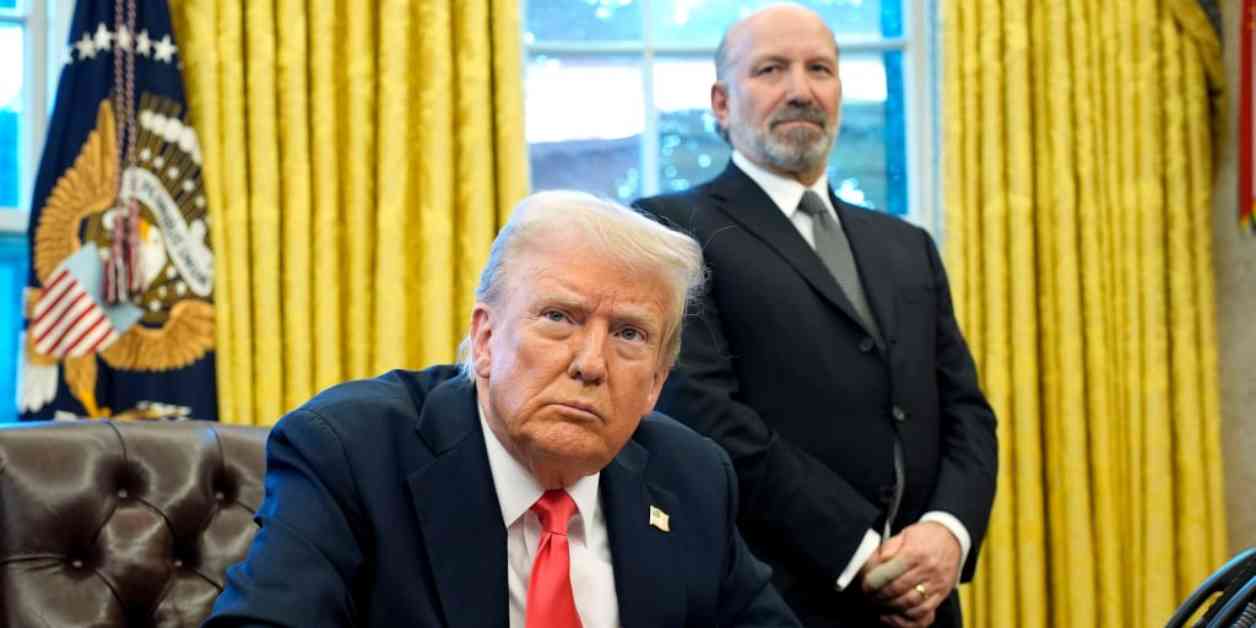As the looming April 2 deadline for President Donald Trump’s tariff announcement approaches, the financial markets are gripped by uncertainty, with investors eagerly awaiting clarity on the details of this highly anticipated strategy. Speculation and anticipation have driven the stock market to its highest levels in over a week, following reports from Bloomberg and The Wall Street Journal hinting at potential exemptions for key industrial sectors from blanket tariffs.
Tesla, a company plagued by recent challenges, experienced a significant surge in its stock price on Monday, reflecting the positive market sentiment towards potential tariff relief. The electric car manufacturer, in a bid to protect itself from retaliatory measures in response to Trump’s tariffs, had expressed vulnerability in a letter to the president’s trade representative. Despite these developments, a source familiar with Trump’s decision-making process revealed to NBC News that the final scale of the tariffs is yet to be determined.
Amidst this atmosphere of uncertainty, Trump’s announcement on his Truth Social platform regarding a 25% tariff on countries purchasing oil or gas from Venezuela added another layer of complexity. The president’s subsequent declaration of impending tariffs on automobiles, aluminum, and pharmaceuticals further fueled market volatility, causing fluctuations in the shares of major companies like Ford, GM, and Stellantis.
Trump’s Evolving Tariff Strategy
Despite his public posturing, Trump has displayed a degree of flexibility in his approach to tariffs, signaling a willingness to engage in negotiations. His recent comments hinting at the possibility of discussions with China and a tempered stance towards longstanding U.S. allies have provided a glimmer of hope amidst the prevailing uncertainty. Treasury Secretary Scott Bessent’s indication that a limited number of countries, dubbed the “Dirty 15,” would bear the brunt of the tariffs shed light on the potential scope of the measures.
The suspension of threatened tariffs on Mexico and Canada, as well as exemptions granted to goods covered by trade agreements, underscore Trump’s receptiveness to feedback from key stakeholders. The U.K.’s pursuit of a bilateral trade deal focusing on technology and the E.U.’s engagement in discussions with White House officials highlight the global implications of the tariff strategy. Meanwhile, ongoing trade talks with India and Hyundai’s planned investment in U.S. onshoring reflect the far-reaching impacts of these economic policies.
Impact on Economic Outlook
The specter of tariffs continues to cast a shadow over economic growth forecasts, with concerns mounting among businesses about the potential ramifications. S&P Global’s assessment of dwindling business expectations and the prevalence of trade-related discussions in corporate earnings calls underscore the pervasive impact of tariff threats. The Federal Reserve’s warning about inflationary pressures stemming from tariffs further underscores the gravity of the situation, with uncertainties surrounding the ultimate outcome of these policies.
As the countdown to Trump’s tariff ‘Liberation Day’ intensifies, the financial markets brace for a watershed moment that could reshape global trade dynamics. The delicate balance between protectionist measures and economic stability hangs in the balance, with stakeholders across industries awaiting the president’s final decision with bated breath. In a climate defined by uncertainty and speculation, the impact of Trump’s tariffs reverberates far beyond the realm of trade, shaping the economic landscape for the foreseeable future.














